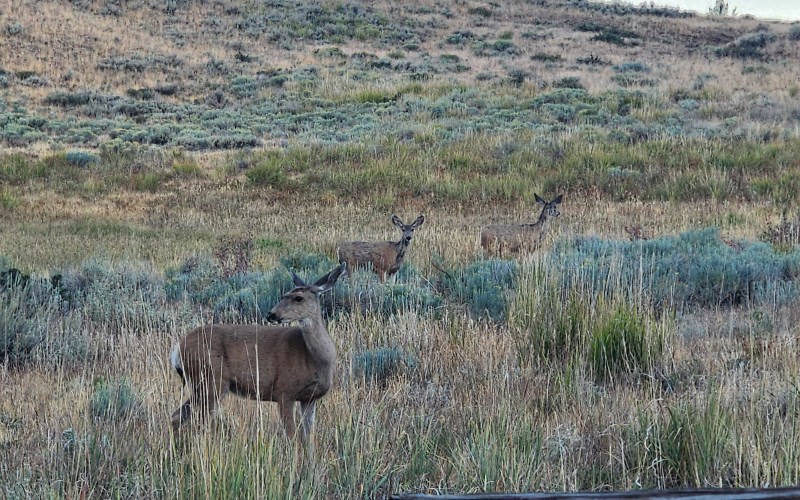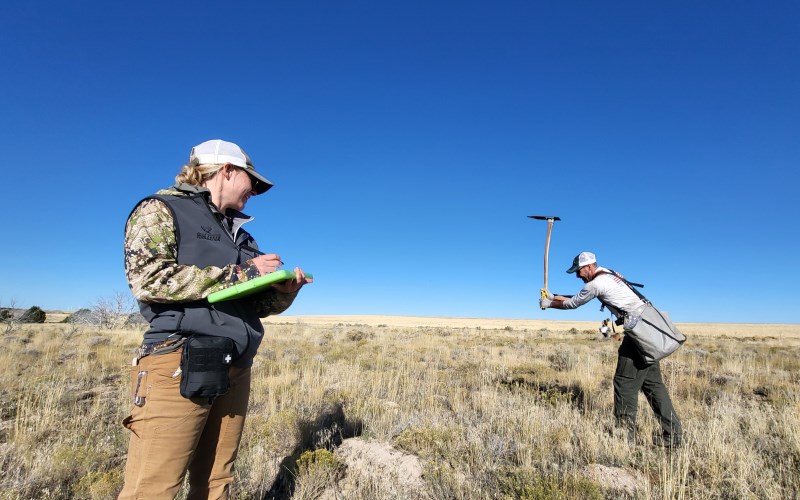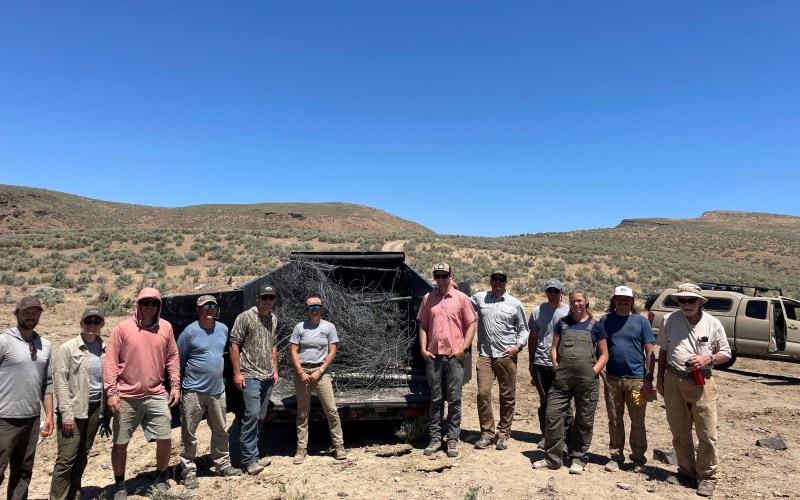|
STORY BY KATE DALY It might seem counterintuitive, given that it’s deer hunting season. But one local who describes himself as “a passionate outdoorsman” is organizing volunteers to plant sagebrush seedlings today to give the deer more food in a former burn area on either side of Highway 20 in Picabo. Two and a half years ago Taylor Gregory and friend Ross Baker co-founded the Wood River Chapter of the Mule Deer Foundation, a national group dedicated to the conservation of mule and black-tailed deer and their habitats. (Note, there are no black-tailed deer in Idaho, but mule deer do have black tips at the end of their tails.) Gregory used to work in chinook salmon research and says from that experience, “I get the large-scale habitat.”
|
|

An area frequented by mule deer burned near Picabo last year. PHOTO: Karen Bossick
|
|
|
So far, he has helped lead two efforts for the Mule Deer Foundation: He has removed fences in a mule deer migratory corridor, and he collected sagebrush seedlings last fall near Carey. Desert Sage, a nursery in Oakley, Idaho, has been raising those seedlings. And now, a year later, 3,000 of them are ready to be put in the ground. Gregory says that in burned areas invasives such as skeleton weed often sprout up before native plants can establish themselves. The hope is that the sagebrush seedlings are mature enough to take hold and thrive in their new natural setting. The plan is for volunteers to meet at Picabo Angler at 9 a.m. today—Saturday, Nov. 1--dressed in leather gloves, boots and warm layers. Carpooling will be arranged to the planting locations, and tools will be provided. Questions can be directed to Gregory at 509-998-6026.
|
|

Tracy Loftus shot this picture of an earlier planting.
|
|
|
Gregory points out that native plants, such as sagebrush and bitterbrush, nourish not only mule deer, but also herds of elk and pronghorn who tend to follow the same corridors when they head toward lower elevations to withstand winter weather. He talks regularly to a regional habitat biologist with Idaho Fish and Game to pinpoint where help is needed to improve wildlife habitat. “I already have a grant to plant 4,000 more seedlings next year,” he said. In the spring he expects to do more fence removal, followed by more planting in the fall.
|
|

Taylor Gregory and Ross Baker have rallied volunteers to help remove fencing, collect seeds and, now, plant seedlings. COURTESY
|
|
|
|